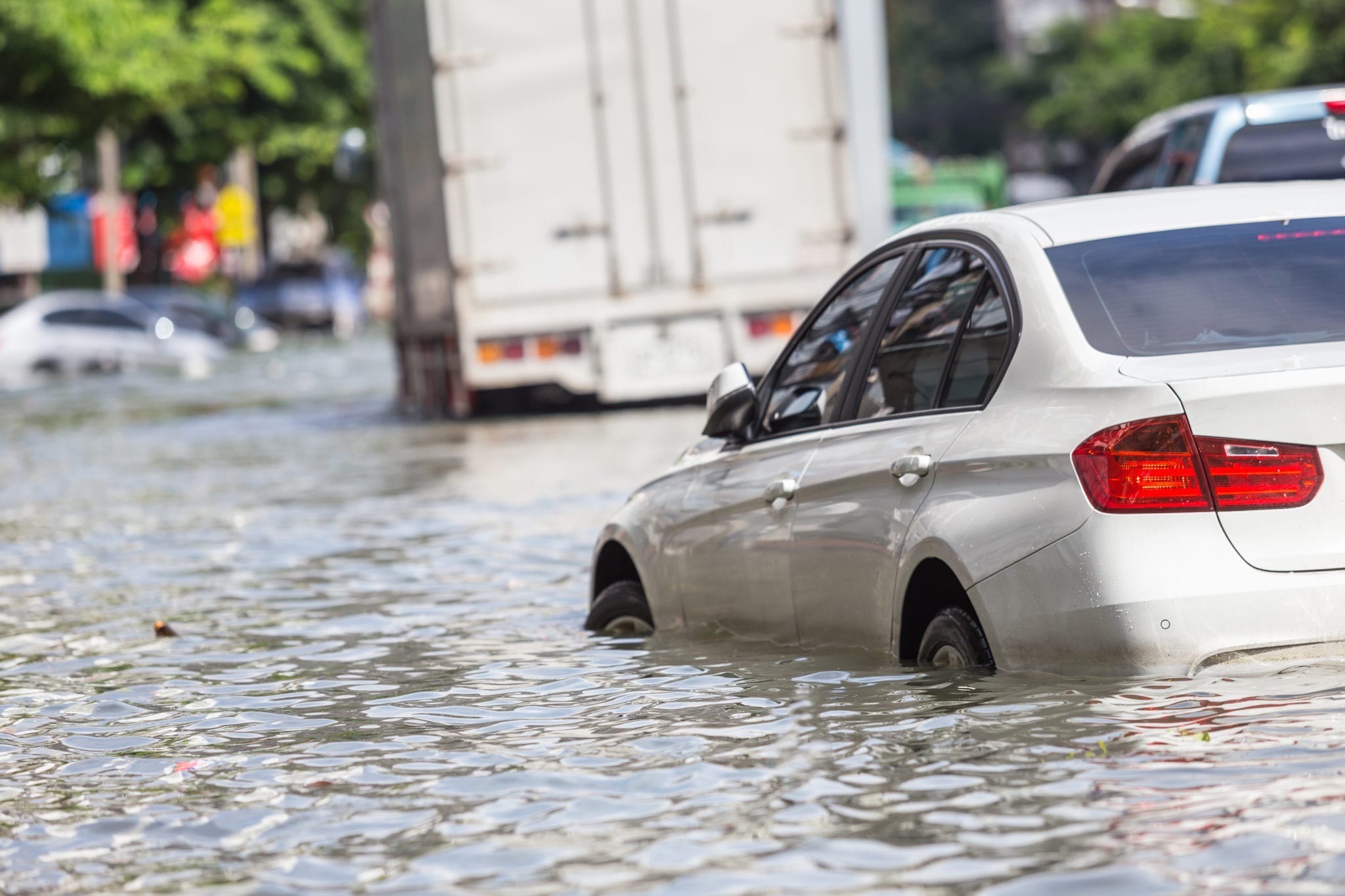

Finance
What Does Flood Insurance Cover In Texas
Published: November 23, 2023
Protect your finances from the devastating effects of flooding in Texas with comprehensive flood insurance coverage. Don't risk losing everything, get the financial protection you need today.
(Many of the links in this article redirect to a specific reviewed product. Your purchase of these products through affiliate links helps to generate commission for LiveWell, at no extra cost. Learn more)
Table of Contents
- Introduction
- Understanding Flood Insurance in Texas
- What is Covered by Flood Insurance in Texas
- Dwelling Coverage
- Personal Property Coverage
- Additional Living Expenses Coverage
- Debris Removal Coverage
- Increased Cost of Compliance Coverage
- Understanding Policy Exclusions
- Tips for Filing a Flood Insurance Claim in Texas
- Conclusion
Introduction
Living in Texas can be a dream come true for many, with its vast landscapes, vibrant cities, and warm Southern charm. However, the Lone Star State is also prone to severe weather conditions, including hurricanes, tropical storms, and heavy rains that can lead to devastating floods. In fact, Texas has experienced some of the most significant flood events in recent history, causing billions of dollars in damages.
While homeowners insurance may provide coverage for certain perils like fire and theft, it typically does not cover flood damage. That’s where flood insurance comes in. Whether you live in a high-risk flood zone or not, having flood insurance can provide you with the peace of mind and financial protection you need in the event of a flood.
In this article, we will take a closer look at flood insurance in Texas, including what it covers, how it works, and important considerations for homeowners. By understanding the basics of flood insurance, you can make informed decisions to protect your home and belongings.
Understanding Flood Insurance in Texas
Flood insurance is a specialized insurance policy that provides coverage for damages caused by flooding. In Texas, flood insurance is typically obtained through the National Flood Insurance Program (NFIP), which is administered by the Federal Emergency Management Agency (FEMA). It is important to note that flood insurance is separate from your standard homeowners insurance policy.
Unlike other types of insurance, flood insurance is specifically designed to cover damages caused by water entering your home or property from an external source, such as heavy rain, overflowing rivers, or storm surges. It can provide coverage for the structure of your home, as well as your personal belongings.
There are two main types of flood insurance coverage available in Texas:
- Building Property Coverage: This type of coverage provides protection for the physical structure of your home, including the foundation, walls, roof, and other components.
- Personal Property Coverage: This coverage is designed to protect your personal belongings, such as furniture, appliances, clothing, and electronics.
It is important to understand that flood insurance does not cover everything. There are limitations and exclusions to be aware of, and the coverage amounts may vary depending on the policy. Additionally, there is usually a waiting period before the coverage becomes effective, so it’s crucial to plan ahead and not wait until a flood event is imminent to get coverage.
In the following sections, we will explore in more detail what is covered by flood insurance in Texas, including dwelling coverage, personal property coverage, additional living expenses coverage, debris removal coverage, and increased cost of compliance coverage.
What is Covered by Flood Insurance in Texas
Flood insurance in Texas provides coverage for both the structure of your home and your personal belongings. Let’s take a closer look at what is typically covered:
Dwelling Coverage:
Dwelling coverage helps protect the physical structure of your home, including the foundation, walls, roof, electrical systems, plumbing, and HVAC systems. It also covers built-in appliances, such as refrigerators and stoves. Keep in mind that coverage is based on the replacement cost value, which may not necessarily be the same as the market value of your home.
Personal Property Coverage:
Personal property coverage helps protect your belongings, such as furniture, clothing, electronics, and appliances. This coverage extends to items kept in basements, as well as detached structures on your property, such as garages or sheds. It’s important to document your belongings and their value to ensure you have sufficient coverage in case of a flood.
Additional Living Expenses Coverage:
In the unfortunate event that your home becomes uninhabitable due to flood damage, flood insurance may provide coverage for additional living expenses. This can include the cost of temporary housing, food, and other necessary expenses until your home is repaired or until you find a permanent place to live.
Debris Removal Coverage:
Floods often leave behind debris and wreckage that need to be removed for safety and to start the recovery process. Flood insurance can help cover the costs associated with removing debris from your property, ensuring a smoother cleanup and restoration.
Increased Cost of Compliance Coverage:
In certain cases, local building codes and regulations may require you to make modifications or elevate your home to comply with new flood standards. Flood insurance can provide coverage for the increased cost of compliance with these requirements, helping you meet the necessary standards and protect your home.
It is important to review your policy carefully and consult with your insurance provider to fully understand the coverage limits and any additional endorsements that may be available to enhance your flood insurance coverage in Texas. By ensuring you have the right coverage in place, you can have peace of mind knowing that you are financially protected in the event of a flood.
Dwelling Coverage
When it comes to flood insurance in Texas, one of the most critical components is dwelling coverage. This coverage is specifically designed to protect the physical structure of your home, including the foundation, walls, roof, and various systems. It is important to understand the specifics of dwelling coverage to ensure you have adequate protection in the event of a flood.
Here are some key points to keep in mind about dwelling coverage:
Replacement Cost Value:
Dwelling coverage is typically based on the replacement cost value (RCV) of your home, which represents the estimated cost to replace or rebuild your home to its pre-flood condition. This is not the same as the market value of your home, which may include factors unrelated to the physical structure.
Coverage Limits:
Flood insurance policies have specific coverage limits for dwelling coverage. It is crucial to review your policy and ensure that the coverage is sufficient to rebuild your home in case of a complete loss. In some cases, you may have the option to purchase additional coverage to increase the limits if needed.
Exclusions:
It is important to note that flood insurance policies often have exclusions for certain types of property or structures. For example, detached structures, such as garages or sheds, may have their own coverage limits separate from the main dwelling coverage. Additionally, coverage for certain types of property, such as swimming pools or landscaping, may be limited or excluded altogether.
Elevation Requirements:
In some cases, if your home has been repeatedly flooded or is located in a high-risk flood zone, there may be elevation requirements to meet building codes. These requirements may involve raising your home above the expected flood levels. Dwelling coverage can help cover the costs associated with complying with these requirements, ensuring that your home is protected from future flood events.
When considering dwelling coverage for flood insurance in Texas, it is crucial to carefully assess your specific needs and consult with your insurance provider. They can guide you in understanding the coverage limits, exclusions, and options available to create a comprehensive policy tailored to your home and circumstances. By having the right dwelling coverage, you can have the peace of mind knowing that your home is protected against the devastating effects of floods.
Personal Property Coverage
When it comes to protecting your belongings from the devastating effects of a flood, personal property coverage is an essential component of flood insurance in Texas. This coverage helps safeguard your personal possessions, such as furniture, clothing, electronics, and appliances, from damage caused by flooding.
Here are some key points to understand about personal property coverage:
Coverage Limits:
Similar to dwelling coverage, flood insurance policies have specific coverage limits for personal property. It is important to review your policy and ensure that the coverage is sufficient to replace or repair your damaged belongings.
Actual Cash Value vs. Replacement Cost Value:
Personal property coverage can be based on either actual cash value (ACV) or replacement cost value (RCV). ACV takes into account the depreciation of your belongings over time, providing coverage for their current market value. On the other hand, RCV provides coverage for the cost to replace your belongings with new items of similar kind and quality. Understanding which valuation method is used in your policy is important, as it can impact the amount of reimbursement you receive in the event of a claim.
Documentation and Inventory:
Prior to a flood event, it is essential to document your belongings and create a detailed inventory. This can include photographs, videos, or written descriptions of your items. Having an inventory can help expedite the claims process and ensure that you receive fair compensation for your damaged or lost items. It is advisable to store this documentation in a safe and easily accessible location, such as a cloud-based storage service or a waterproof and fireproof safe.
Exclusions:
Similar to dwelling coverage, flood insurance policies may have exclusions for certain valuable items or property. For example, coverage for high-value items like jewelry, artwork, or collectibles may be limited or require additional endorsements. It’s important to review your policy and discuss any specific coverage needs with your insurance provider to ensure you have adequate protection for all your personal property.
Personal property coverage is a vital aspect of flood insurance in Texas, as it can help you recover financially after a flood damages or destroys your belongings. By understanding the coverage limits, valuation methods, and exclusions, you can make informed decisions to protect your personal property effectively.
Additional Living Expenses Coverage
In the unfortunate event that your home becomes uninhabitable due to flood damage, flood insurance in Texas may include coverage for additional living expenses (ALE). ALE coverage is designed to help you with the costs of temporary living arrangements and other necessary expenses while your home is being repaired or until you find a permanent place to live.
Here are some key details to understand about additional living expenses coverage:
Temporary Housing:
ALE coverage can provide reimbursement for the cost of temporary housing, such as rental accommodations or hotel expenses. This includes the cost of utilities and other basic living expenses necessary for your temporary residence.
Food and Transportation:
In addition to housing, ALE coverage may include provisions for food and transportation expenses. This can help cover the costs of meals eaten out or groceries purchased while you are displaced from your home. It may also provide reimbursement for transportation costs related to commuting or moving between temporary accommodations and your workplace or other essential locations.
Time Limit and Coverage Limits:
It is important to review the terms of your policy to understand the time limit and coverage limits for ALE. Policies typically have a specified time limit for ALE coverage, which can vary depending on the policy. Additionally, there may be a maximum amount or percentage limit for reimbursement of expenses. It is essential to keep track of your expenses and provide documentation to support your claims.
Policy Requirements and Exclusions:
Each flood insurance policy may have its own specific requirements and exclusions for ALE coverage. Some policies may require that your home is located in a high-risk flood zone to qualify for ALE benefits. It is important to carefully review the terms of your policy and discuss any questions or concerns with your insurance provider to ensure you understand the coverage and requirements.
Additional living expenses coverage can provide valuable support during the challenging time of displacement caused by flood damage. By understanding the coverage limits, time limits, and policy requirements, you can take steps to prevent financial hardship and focus on the recovery process after a flood.
Debris Removal Coverage
In the aftermath of a flood, the cleanup process can be overwhelming. Flood insurance in Texas may include coverage for debris removal, which can help alleviate the burden of removing wreckage and debris from your property. Debris removal coverage is essential for ensuring a safe and efficient recovery process.
Here’s what you need to know about debris removal coverage:
Covered Expenses: Debris removal coverage typically includes the expenses associated with clearing your property of debris resulting from the flood. This can include the cost of labor, equipment, and transportation required to remove damaged materials, fallen trees, and other debris from your premises.
Limitations on Coverage: While debris removal coverage is designed to assist you in the cleanup process, it’s essential to note that there may be limitations on the coverage amount. Policies typically have a maximum coverage limit for debris removal expenses. It’s crucial to review your policy and understand the specific details regarding coverage limits and reimbursement procedures.
Timely Removal: It is important to promptly initiate the debris removal process following a flood event. Delaying the removal of debris can lead to further damage to your property and potential hazards. Keeping safety as a priority, contact your insurance provider as soon as possible to discuss the process and requirements for debris removal coverage.
Qualified Contractors: To ensure smooth and efficient debris removal, it is recommended to work with professional contractors experienced in flood damage cleanup. These contractors are knowledgeable about safety protocols and proper disposal methods for different types of debris. Verify that the contractors you hire meet any requirements set forth by your insurance policy provider.
Documenting Expenses: To facilitate the claims process and ensure proper reimbursement, it is crucial to document all expenses related to debris removal. Keep receipts, invoices, and any other relevant documentation to support your claim. This documentation will help demonstrate the costs incurred and assist your insurance provider in processing your claim in a timely manner.
It is important to review your flood insurance policy to understand the specific details of debris removal coverage, including any limitations or provisions. By having debris removal coverage, you can focus on the recovery process and ensure a safe and efficient cleanup after a flood.
Increased Cost of Compliance Coverage
In Texas, flood insurance policies can include coverage for increased cost of compliance (ICC). This coverage is designed to assist homeowners when local building codes and regulations require certain modifications or improvements to their property to meet the standards of flood protection. ICC coverage can help mitigate the financial burden of bringing your home into compliance after a flood event.
Here are some key points to understand about increased cost of compliance coverage:
Elevation Requirements: In some cases, if your home has been repeatedly flooded or is located in a high-risk flood zone, local building codes may require you to elevate your home to a specific height to minimize future flood risks. ICC coverage can provide financial assistance in meeting these elevation requirements by helping cover the cost associated with raising your home above the flood level.
Code Compliance Costs: Apart from elevation, there may be other building code requirements that your home needs to meet in order to comply with flood protection standards. This may involve retrofitting certain features, installing flood vents, or making other structural modifications. ICC coverage can help cover the additional costs associated with achieving compliance.
Policy Limitations: It is important to review the terms of your policy to understand the specifics of ICC coverage. Policies typically have limitations on the amount of coverage provided for increased cost of compliance expenses. Familiarize yourself with these limits so you can make informed decisions during the repair and rebuilding process.
Required Documentation: When making a claim for increased cost of compliance coverage, you will likely need to provide documentation that demonstrates the specific requirements and costs associated with meeting local building codes. This may include obtaining permits, submitting plans, and providing estimates from qualified contractors. Working closely with your insurance provider and local authorities can help ensure a smooth documentation process.
Eligibility Requirements: Keep in mind that ICC coverage may have certain eligibility requirements. It is important to understand if your home is eligible for this coverage and what conditions must be met to qualify. Discuss any questions or concerns you have with your insurance provider to clarify eligibility and ensure you understand how ICC coverage applies to your specific situation.
Increased cost of compliance coverage is a valuable component of flood insurance in Texas, as it helps homeowners meet the necessary building code requirements to mitigate the risks of future flood damage. By understanding the coverage limitations, documenting costs, and meeting eligibility requirements, you can leverage ICC coverage to make your home safer and more resilient against future flooding.
Understanding Policy Exclusions
While flood insurance is crucial for protecting your home and belongings in the event of a flood, it’s important to be aware of the policy exclusions. Exclusions are specific items or scenarios that are not covered by flood insurance in Texas. Understanding these exclusions can help you have a realistic expectation of what your policy will and will not cover. Here are some common policy exclusions to be aware of:
Earth Movement:
Most flood insurance policies do not cover damage caused by earth movement, including earthquakes, landslides, or sinkholes. If your area is prone to such events, you may need to consider obtaining separate coverage or insurance policies to protect against these perils.
Mold and Mildew:
While flood insurance provides coverage for water damage caused by flooding, it typically does not cover damage or remediation relating to mold or mildew. However, some limited coverage may be available if the mold is a direct result of a covered flood loss.
Loss of Use:
Flood insurance policies generally do not provide coverage for loss of use or loss of income resulting from a flood event. If you are unable to live in your home or operate your business due to flood damage, additional living expense (ALE) coverage or separate business interruption coverage may be necessary.
Outdoor Property:
Flood insurance policies may have limitations or exclusions on coverage for outdoor property, such as fences, decks, swimming pools, or landscaping. It’s important to review your policy and consider additional coverage options if you have significant outdoor property that you want to protect.
Basements:
Flood insurance policies may have certain limitations on coverage for basements and below-grade areas. This can include restrictions on coverage for structural damage, personal property, or appliances located in the basement. Review your policy carefully to understand the extent of coverage for basement areas.
It is crucial to review your flood insurance policy carefully to fully understand the exclusions that may apply. These exclusions can vary from policy to policy, so it’s important to consult with your insurance provider for detailed information regarding the specific coverage and exclusions of your policy. By understanding the exclusions, you can make informed decisions and explore additional coverage options if necessary.
Tips for Filing a Flood Insurance Claim in Texas
Filing a flood insurance claim in Texas can be a complex process, but following a few key tips can help ensure a smoother and more successful experience. Here are some important tips to keep in mind when filing a flood insurance claim:
Document the Damage:
Before you begin the cleanup and repair process, document the damage to your property and belongings with photos, videos, or written descriptions. This documentation will serve as evidence of the extent of the damage and help support your claim.
Contact Your Insurance Provider:
Notify your insurance provider as soon as possible after the flood. Be prepared to provide your policy number, a description of the damage, and any relevant documentation. Follow their instructions and provide any additional information they request.
Keep a Record of Communication:
Keep a detailed record of all communication with your insurance company, including the date, time, and content of phone calls, emails, and letters. This will help ensure that you have a record of all discussions and agreements made during the claims process.
Make Temporary Repairs:
If necessary, make temporary repairs to prevent further damage to your property. Take photos or videos of the damaged areas before making any repairs and keep receipts and documentation for any temporary repairs you make. Consult with your insurance provider before making any significant repairs or changes.
Work with Approved Contractors:
When it comes to repairs and restoration, work with licensed and insured contractors who are familiar with flood damage repairs. Your insurance provider may have a list of approved contractors, so be sure to inquire before hiring anyone for the job.
Submit an Accurate and Detailed Proof of Loss:
A Proof of Loss is a document that details the items you are claiming for, their value, and the amount you are requesting from your insurance company. Ensure that your Proof of Loss is accurate and comprehensive, including all damaged items and their estimated value. Submit the Proof of Loss within the timeline specified by your insurance provider.
Follow Up on Your Claim:
After submitting your claim, stay in contact with your insurance provider to obtain updates on the status of your claim. If there are any delays or issues, discuss them with your provider and follow up as needed to ensure that your claim is processed in a timely manner.
Remember to be patient throughout the claims process, as it can take time to assess the damages and reach a settlement. Stay organized, stay in communication with your insurance provider, and provide any requested documentation promptly to help expedite the process.
By following these tips, you can navigate the flood insurance claim process in Texas with greater confidence and increase the likelihood of a successful outcome.
Conclusion
Flood insurance in Texas is a vital safeguard against the devastating effects of flooding, which can cause significant damage to homes and belongings. Understanding the coverage options, exclusions, and claims process is crucial for homeowners seeking financial protection in the event of a flood.
In this article, we explored the key aspects of flood insurance in Texas, including dwelling coverage, personal property coverage, additional living expenses coverage, debris removal coverage, and increased cost of compliance coverage. We also discussed important considerations such as policy exclusions and provided tips for filing a flood insurance claim.
By obtaining flood insurance coverage, homeowners can gain peace of mind knowing that they are financially protected against the potential costs of flood damage. It’s essential to carefully review your policy, understand its terms and limitations, and work closely with your insurance provider to ensure you have the right coverage in place for your unique needs.
Remember to document the damage, notify your insurance provider promptly, and follow the claims process diligently. By adhering to these best practices, you can increase the likelihood of a successful claim and a smoother recovery process.
Protecting your home and possessions with flood insurance demonstrates a proactive approach to safeguarding your property and financial well-being. Take the necessary steps to understand your coverage, seek out additional endorsements when needed, and stay informed of any changes to your policy or flood risk in your area.
By staying prepared and proactive, you can ensure that you and your loved ones are better equipped to face the challenges of flooding and mitigate the potential impact on your lives and finances.














